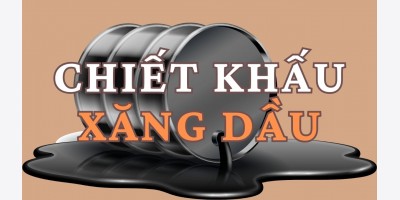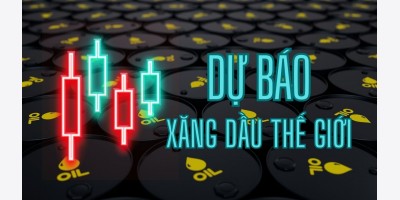Giá dầu tăng trở lại sau 05 ngày giảm giá
Phiên châu Á sáng nay, giá dầu thô Ä‘ã quay đầu tăng trở lại sau chuá»—i giảm giá 05 liên tiếp do giá»›i đầu tÆ° nháºn thấy rằng giá dầu Ä‘ã giảm xuống mức thấp và Ä‘ây là mức lý tưởng để mua vào, hÆ¡n nữa đồng USD giảm giá so vá»›i EUR cÅ©ng làm tăng tính hấp dẫn của hàng hóa.
Äây là lần đầu tiên trong 6 ngày đồng Ä‘ô la giảm giá so vá»›i euro, tá»· giá EUR/USD hiện Ä‘ang ở mức 1,2663, trÆ°á»›c Ä‘ó lúc 9h17 sáng giá» Singapore, tỉ giá cặp tiá»n tệ này là 1,2660.
Hôm qua, giá dầu thô rÆ¡i xuống Ä‘áy thấp nhất trong 11 tuần trong bối cảnh doanh số bán nhà ở cÅ© tại Mỹ trong tháng 7 giảm mạnh hÆ¡n cả dá»± báo, khiến tâm lý các nhà đầu tÆ° lại thêm phần lo ngại cho tốc Ä‘á»™ tăng trưởng kinh tế toàn cầu cÅ©ng nhÆ° nhu cầu nhiên liệu. Thêm vào Ä‘ó, sức ép từ thị trÆ°á»ng chứng khoán Mỹ tiếp tục trượt giá, chỉ số S&P500 giảm 1,5% xuống 1.051,87 Ä‘iểm, còn chỉ số Dow Jones giảm 1,3% xuống 10.040,45 Ä‘iểm.
NhÆ° váºy, sau 5 ngày giảm giá, giá dầu Ä‘ã mất 5,5%. Có lẽ đối vá»›i các thÆ°Æ¡ng nhân và các nhà đầu tÆ°, giá Ä‘ã giảm quá nhiá»u, quá nhanh và há» coi Ä‘ây là má»™t thá»i Ä‘iểm thích hợp để mua vào, Victor Shum tại Purvin & Gertz Inc nháºn xét. Giá càng tiến vá» gần 70 USD/thùng càng hấp dẫn các nhà đầu tÆ° mua vào.
Äầu tÆ° vào các công cụ vốn vẫn có lãi. ÄÆ¡n đặt hàng lâu bá»n rất có thể sẽ tăng trong tháng 7 sau 2 tháng giảm trÆ°á»›c Ä‘ó, các nhà kinh tế lạc quan khi dá»± báo nhÆ° thế.
Thêm vào sá»± lạc quan này, táºp Ä‘oàn sản xuất dầu khí Saudi Aramco của Aráºp Xê Út Ä‘Æ°a ra dá»± báo, giá dầu vào cuối năm nay sẽ ở mức 82 USD/thùng vá»›i nhu cầu đến từ Trung Quốc và Ấn Äá»™.
Chuyên gia Mohamed Daoudi – đứng đầu bá»™ pháºn nghiên cứu và công nghệ tại
Trên sàn Nymex, dầu thô tÆ°Æ¡ng lai giao tháng 10 lúc 10h30 sáng giá»
Trên sàn ICE Future Europe ngày, dầu thô Brent tÆ°Æ¡ng lai giao tháng 10 tăng 42 cents, hay 0,6% lên 72,80 USD/thùng. TrÆ°á»›c Ä‘ó lúc 10h30 giá là 72,72 USD/thùng. Hôm qua hợp đồng này giảm 1,24 USD, hay 1,7% xuống còn 72,38 USD/thùng.
Tổng hợp
Oil Snaps Five-Day Losing Streak as Decline to Near $70 Draws Investors
By Yee Kai Pin - Aug 24, 2010 7:50 PM PT Wed Aug 25 02:50:00 GMT 2010
Crude oil snapped a five-day losing streak in
Oil rebounded as the
“Oil is perhaps dropping too much, too fast for traders and investors and some see this as a buying opportunity,” Victor Shum, a senior principal at
Crude for October delivery rose as much as 32 cents, or 0.5 percent, to $71.95 a barrel in electronic trading on the New York Mercantile Exchange. It was at $71.84 at 10:30 a.m.
The dollar ended a five-day rally against the euro, dropping as low as $1.2663 to the common currency. It was at $1.2656 to the 16-nation euro at 10:30 a.m. in
Economic Recovery
Oil has lost 5.5 percent in the previous five days amid concern the global economic recovery would stall and curb fuel demand. Yesterday, the National Association of Realtors said sales of previously owned homes in the
“We have been inundated with bad economic data and so sentiment has swayed to the bearish side,” said Shum at Purvin & Gertz. “But if you stepped back, the global economy has indeed recovered from a deep recession last year to an assuredly firming trend this year.”
Business investment in capital equipment remained positive. Orders for durable goods meant to last at least three years increased in July after falling in the previous two months, based on the median estimate from economists in a Bloomberg News survey before a Commerce Department report today.
Brent crude for October delivery rose as much as 42 cents, or 0.6 percent, to $72.80 a barrel on the London-based ICE Futures Europe Exchange. It was at $72.72 at 10:30 a.m.
Gasoline Demand
Retail gasoline demand in the
Yesterday, the American Petroleum Institute said gasoline stockpiles increased 692,000 barrels to 226.2 million and crude inventories dropped 1.85 million barrels to 356.8 million.
“The Labor Day holiday is coming and we’ve still got lots of stocks,” said Jonathan Barratt, managing director at Commodity Broking Services Pty in
To contact the reporter on this story: Yee Kai Pin in
Crude Drops Below $72 as Equities Decline Amid Concern Recovery Is Slowing
By Margot Habiby - Aug 24, 2010 1:51 PM PT Tue Aug 24 20:51:18 GMT 2010
Oil dropped to its lowest level in 11 weeks as sales of previously owned
Futures declined 2 percent as
“We’re getting all the classic signals that the economy is slowing down,” said Bill O’Grady, chief market strategist at Confluence Investment Management in
Crude for October delivery fell $1.47 to settle at $71.63 a barrel on the New York Mercantile Exchange, the lowest level since June 7. Oil has lost 13 percent since Aug. 3 and has decreased 3.7 percent in the past year.
Prices declined from the settlement as equities extended losses after oil closed. The American Petroleum Institute reported at 4:30 p.m. that
Home sales were forecast to decline 13.4 percent to a 4.65 million rate, according to a Bloomberg News survey. The July figure was lower than all 74 responding economists estimated.
Equities, Growth
The Standard & Poor’s 500 Index fell 1.5 percent to 1,051.87, and the Dow Jones Industrial Average lost 1.3 percent to 10,040.45.
Oil demand typically declines in the third quarter at the end of the
“The market continues to slip on worries about demand,” said Tom Bentz, a broker with BNP Paribas Commodity Futures Inc. in
Gasoline Supply
Gasoline inventories fell 0.2 percent last week, based on the median estimate from 17 analysts surveyed by Bloomberg News before an Energy Department report tomorrow.
Supplies of the motor fuel probably declined 450,000 barrels from 223.3 million in the prior week, when they were 10 percent above the five-year average, according to the Energy Department. The API report showed that gasoline stockpiles gained 692,000 barrels, or 0.3 percent, to 226.2 million.
Gasoline for September delivery fell 3.16 cents, or 1.7 percent, to settle at $1.8494 a gallon, the lowest closing price since Dec. 15.
“There’s way too much product inventory, and the economy is looking scarier by the day,” said Michael Lynch, president of Strategic Energy & Economic Research in
Oil Inventories
Stockpiles of oil and fuels climbed 5.3 million barrels to 1.13 billion in the week ended Aug. 13, the highest level since at least 1990, when the Energy Department began to collect weekly data. On a monthly basis, supplies are at the highest level since November 1983.
“The market is extremely weak fundamentally and without a strong euro or a strong stock market, it just doesn’t have anything else to peg its hopes on,” said Peter Beutel, president of trading advisory company Cameron Hanover Inc. in
The euro was little changed at $1.267 at 4:25 p.m. in
Saudi Aramco,
Saudi Forecast
“The prospect is good,” Mohamed Daoudi, head of research and technology at
Brent crude for October delivery lost $1.24, or 1.7 percent, to $72.38 a barrel on the London-based ICE Futures Europe Exchange.
Oil volume in electronic trading on the Nymex was 549,657 contracts as of 4:25 p.m. in








